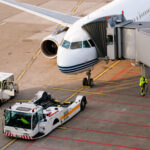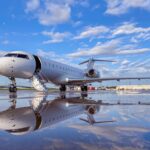ASKA, a Silicon Valley air mobility company, has announced that a full-scale prototype of its A5 flying car has completed its first airborne tests.
The vehicle lifted from a California airfield using hovered thrust while the vehicle was tethered to the ground.
The size of an SUV in the drive mode, the four-seater ASKA A5 is a flying car that can travel by road and air with vertical takeoff and landing (VTOL) and short takeoff and landing (STOL) capabilities.
The drive and fly eVTOL is designed with maximum safety standards and a 250 mile flight range.
On June 30th, 2023 the company reported that the A5 had achieved Certificate of Authorization (COA) and Special Airworthiness Certification by the FAA. ASKA A5 is also the world’s first flying car to start the type certification process with the FAA.
ASKA A5
ASKA A5 received authorisation to drive on public roads from the Department of Motor Vehicles (DMV) and the company has successfully conducted more than 300 miles of road testing with the ASKA A5 around Silicon Valley.
Guy Kaplinsky, CEO and cofounder, said: “It was an incredible feeling of accomplishment for the team to reach this new milestone. This moment represents a giant leap for the Aviation and Automotive industries. Having accomplished the first series of hover flight testing as well as driving testing, ASKA is a pioneer in the field of electric flying cars with VTOL capabilities.”
ASKA A5 is not only capable of vertical takeoff and landing (VTOL) from a helipad or vertiport; the vehicle can also perform an energy-efficient short takeoff and landing (STOL) from the runway using the in-wheel motors, thrust from the props and aerodynamic wings.
Maki Kaplinsky, co-founder, chair and COO, commented on the A5’s next steps towards commercialisation in 2026, subject to regulatory approvals: “This first lift-off was a true accomplishment and years of engineering design and analysis became a reality. A5 successfully lifted off and maintained thrust hover status. We are closely working with the FAA to ensure continued excellent progress with our flight testing. We will continue the optimization of hovering and VTOL. The next phase will be working toward transition into cruise and STOL.”
Subscribe to the FINN weekly newsletter

